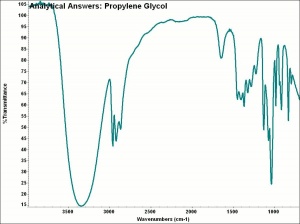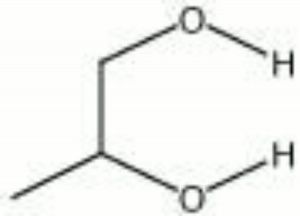Propylene glycol
Jump to navigation
Jump to search
Description
A viscous hygroscopic liquid commonly used as a nontoxic Antifreeze additive in food and drinks. Propylene glycol also acts as an Inhibitor for mold and bacteria. Industrially, it is used as a Solvent and Emulsifier for synthetic resins, Rosin, and essential oils. Propylene glycol oxidizes with mild heat to form acetic, pyruvic, and lactic acids. In building shut down during the pandemic, propylene glycol was poured into drains to keep them moist, thus minimizing pest incursionsthrough the pipes.
Synonyms and Related Terms
1,2-propanediol; methyl glycol; 1,2-dyhydroxypropane; methylethylene glycol
Risks
- Ingestion and inhalation may cause minor problems.
- Skin contact may be irritating and defatting.
- Flammable. Flash point = 99C (210F)
- ThermoFisher: SDS
Physical and Chemical Properties
Miscible with water, acetone, chloroform. Soluble in ether.
| Composition | C3H8O2 |
|---|---|
| CAS | 57-55-6 |
| Melting Point | -59 C |
| Density | 1.036 g/ml |
| Molecular Weight | mol. wt.=76.09 |
| Boiling Point | 188.2 C |
Resources and Citations
- The Merck Index, Martha Windholz (ed.), Merck Research Labs, Rahway NJ, 10th edition, 1983
- MSDS Sheet

